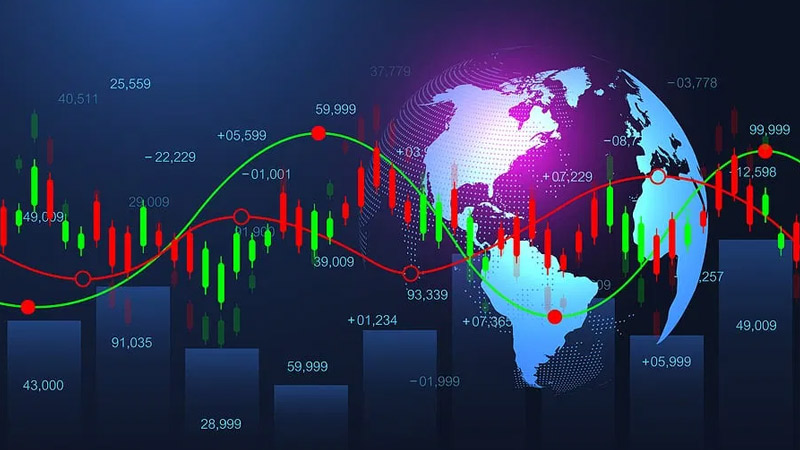
Leveraging technical indicators in advanced CFD trading
Contracts Difference (CFD) trading is a highly dynamic and versatile arena offering traders vast opportunities. With its unique characteristics and flexibility, CFD trading in Singapore allows investors to speculate on the price movements of financial instruments and not own the underlying assets.
A crucial factor in CFD trading lies in understanding and effectively leveraging technical indicators. These indicators are powerful tools that provide valuable insights into market trends, patterns, and potential entry or exit points. By analysing these indicators, traders can make informed decisions and optimise their trading strategies to capitalise on market movements.
In this comprehensive article, we aim to guide you through the world of advanced CFD trading and help you make the most of these technical indicators. We will delve into different types of indicators, their interpretation, and practical applications. By profoundly understanding these tools, you can enhance your trading skills and confidently navigate the dynamic CFD market.
So, whether you are a seasoned trader looking to refine your strategies or a beginner eager to explore the world of CFD trading, this article will be your go-to resource for mastering the art of leveraging technical indicators in advanced CFD trading. Let’s dive in and unlock the full potential of this exciting and rewarding trading arena!
Table of Contents
Understanding technical indicators
Technical indicators are financial mathematical calculations that can help predict future price movements based on old market data. These indicators, used mainly for market forecasting, provide valuable insights into market conditions in Asia and potential entry or exit points.
Technical indicators are categorised into four main types: trend, momentum, volatility, and volume. Each type of indicator can be used to better understand the current market and identify potential trading opportunities. For example, trend indicators such as moving averages help identify a particular instrument’s price direction.
Momentum indicators like the relative strength index (RSI) can be used to gauge whether the market is overbought or oversold. Volatility indicators such as Bollinger Bands help traders see how volatile the market is, while volume indicators indicate potential changes in trend direction.
Interpreting technical indicators
Interpreting technical indicators correctly is the key to successful CFD trading. It’s important to note that these indicators are not foolproof and should always be used in trading decisions. Instead, traders should combine multiple indicators to build a more comprehensive market picture and make informed decisions.
For instance, traders can use a combination of trend, momentum or volume indicators to identify potential entry and exit points. For instance, they can use a combination of the Moving Average Convergence Divergence (MACD) and Relative Strength Index (RSI) to evaluate whether or not the market is overbought or oversold. Similarly, they can combine trend indicators such as the Simple Moving Average (SMA) with volume indicators such as the On-Balance-Volume (OBV) to gauge whether or not a trend is gaining strength.

Practical applications of technical indicators
Once traders have a solid grasp of accurately interpreting technical indicators, they can apply them effectively in practical trading scenarios. Let’s explore some examples of how these indicators can be utilised:
Identifying potential entry and exit points
By combining various indicators, traders can pinpoint potential entry and exit points in the market. For instance, a trader might employ trend indicators like the Simple Moving Average (SMA) to identify favourable trading opportunities. Conversely, momentum indicators such as the Relative Strength Index (RSI) can provide insights into whether or not a trend is poised for a reversal.
Determining the strength of a trend
Volume indicators, such as the On-Balance-Volume (OBV), can be invaluable in gauging the strength of a trend and predicting its likelihood of continuation or potential break.
Identifying potential reversals
Combining indicators like Bollinger Bands with the RSI can equip traders to spot potential market reversals. It can be beneficial in anticipating trends and making informed trading decisions. By employing these technical indicators in their analysis, traders can better understand market dynamics and improve their overall trading performance.
Conclusion
Technical indicators are powerful tools that provide valuable insights into market conditions and potential entry or exit points. Traders can make informed decisions and optimise their CFD trading strategies by understanding and effectively leveraging these indicators.
Technical indicators should be used in collaboration with other indicators to build a more comprehensive market picture. With the right combination of indicators, traders can determine when to enter, exit or trade the market and potentially capitalise on market movements.
By understanding the different types of indicators, their interpretation, and their practical applications, you can confidently navigate the dynamic CFD market and make the most of your trading journey.


